A possible mass distribution of primordial black holes implied by LIGO-Virgo
Outline
- LIGO BHs
- Primordial?
- A simple model "fitting" LIGO
- A possible mechanism
Outline
- LIGO BHs
- Primordial?
- A simple model "fitting" LIGO
- A possible mechanism
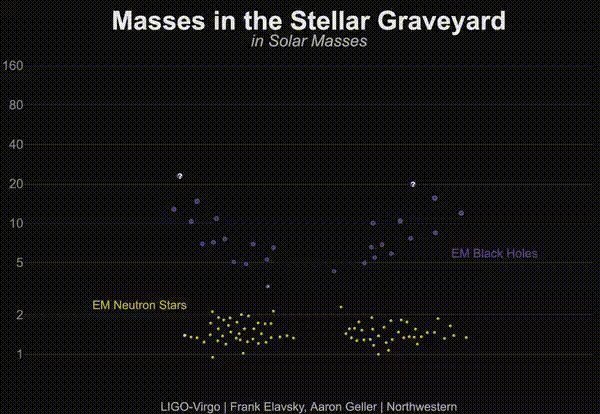
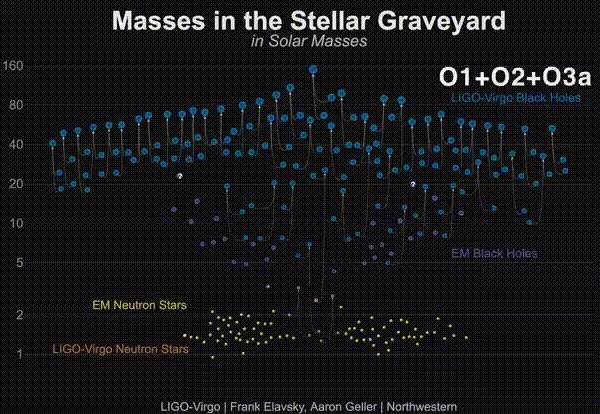

Mass distribution of LIGO BHs
BH mass
(BH number)
Outline
- LIGO BHs
- Primordial?
- A simple model "fitting" LIGO
- A possible mechanism
LIGO BHs
- Supermassive black holes
- LIGO black holes
- Dark matter
SMBH
...
Primordial black holes (PBHs)
...
BHs formed during radiation era
Motivations
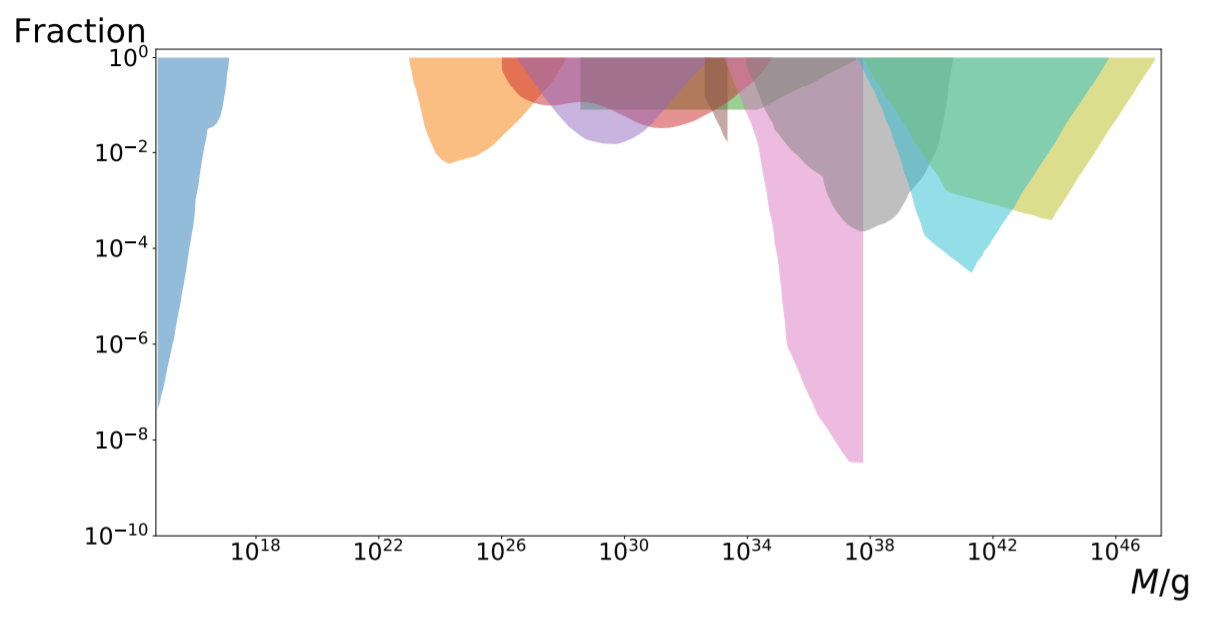
Observational constraints of PBHs as DM
PBH binary
PBH mass function
(Fraction of CDM in PBHs with \(\sim m\))
(Fraction of CDM in PBHs within (\(m, m+\text{d}m)\))
(Fraction of CDM in PBHs)
For example, \( f(30M_\odot)=10^{-3}\) means PBHs of \( 30M_\odot \) constitute 0.1% DM
PBH mass function \( f(m)\)
Merger rate \(R(m_1,m_2,z) \)
Detection probability \(p_{det}(m_1,m_2,z)\)
Probability of each event \(p(m_1,m_2,z)\)
+
Likelihood of all LIGO events
Merger signals reaching the earth today
Outline
- LIGO BHs
- Primordial?
- A simple model "fitting" LIGO
- A possible mechanism

Mass distribution of LIGO BHs
A simple mass function

Maximizing \(\mathcal{L}\) in a 4-parameter space
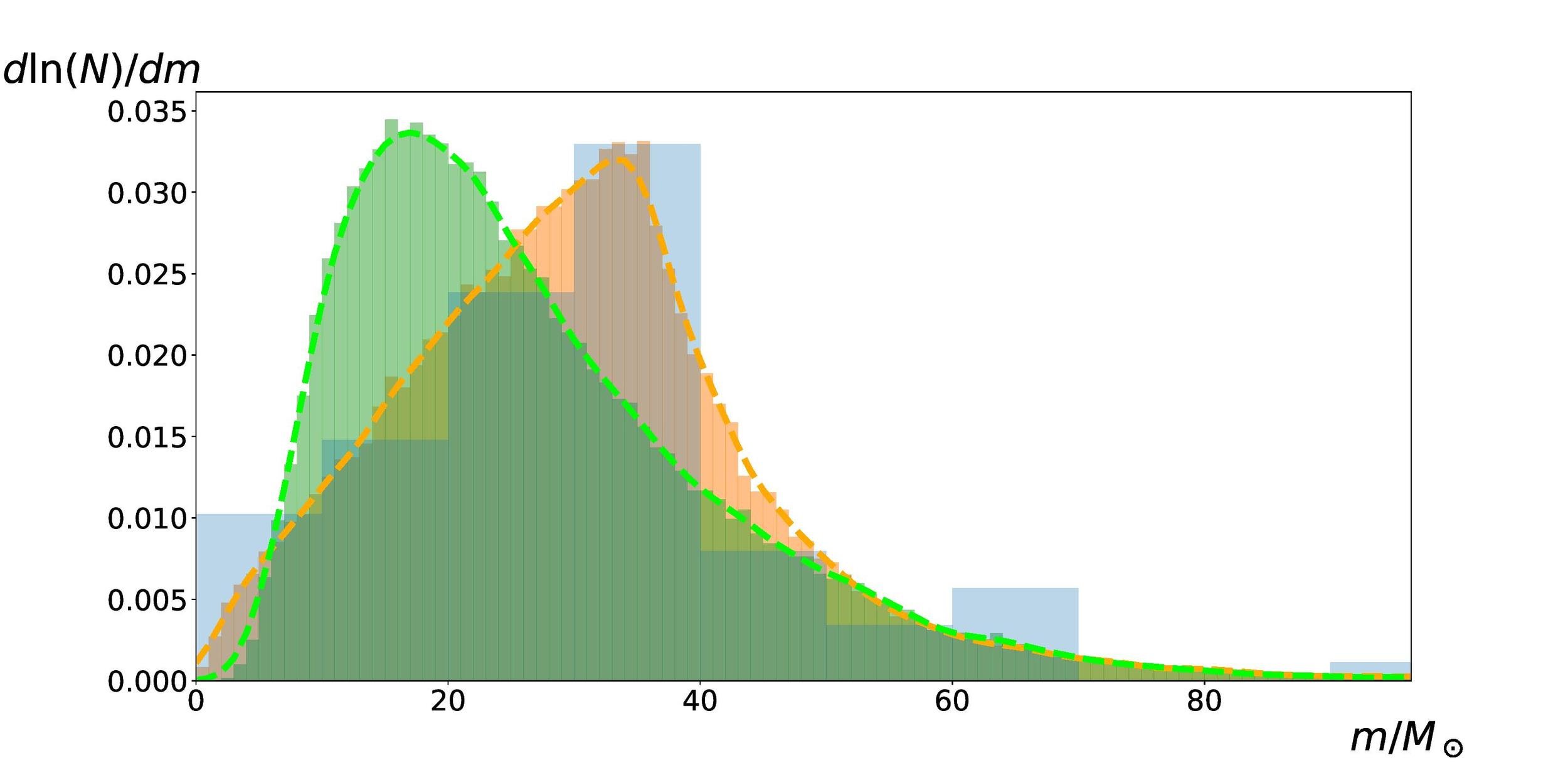
orange: broken power law (our model)
green: log-normal
blue: LIGO
Outline
- LIGO BHs
- Primordial?
- A simple model "fitting" LIGO
- A possible mechanism
A possible mechanism

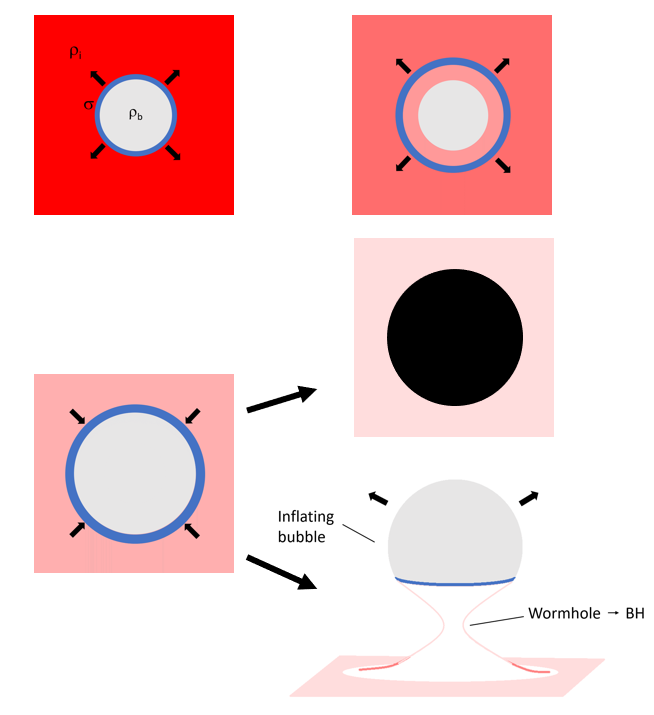
subcritical
supercritical
r
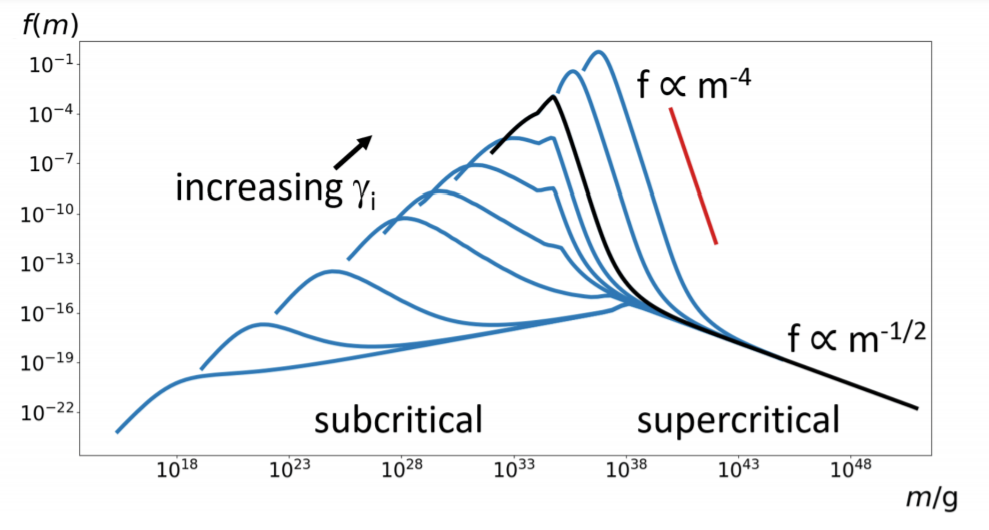
BH mass distribution \(f(m)\)
Parameters: \(\lambda\), \(\gamma_i\), \(\rho_i\), \(\rho_b\), \(\sigma\)
"initial speed"
"force"
"mass"

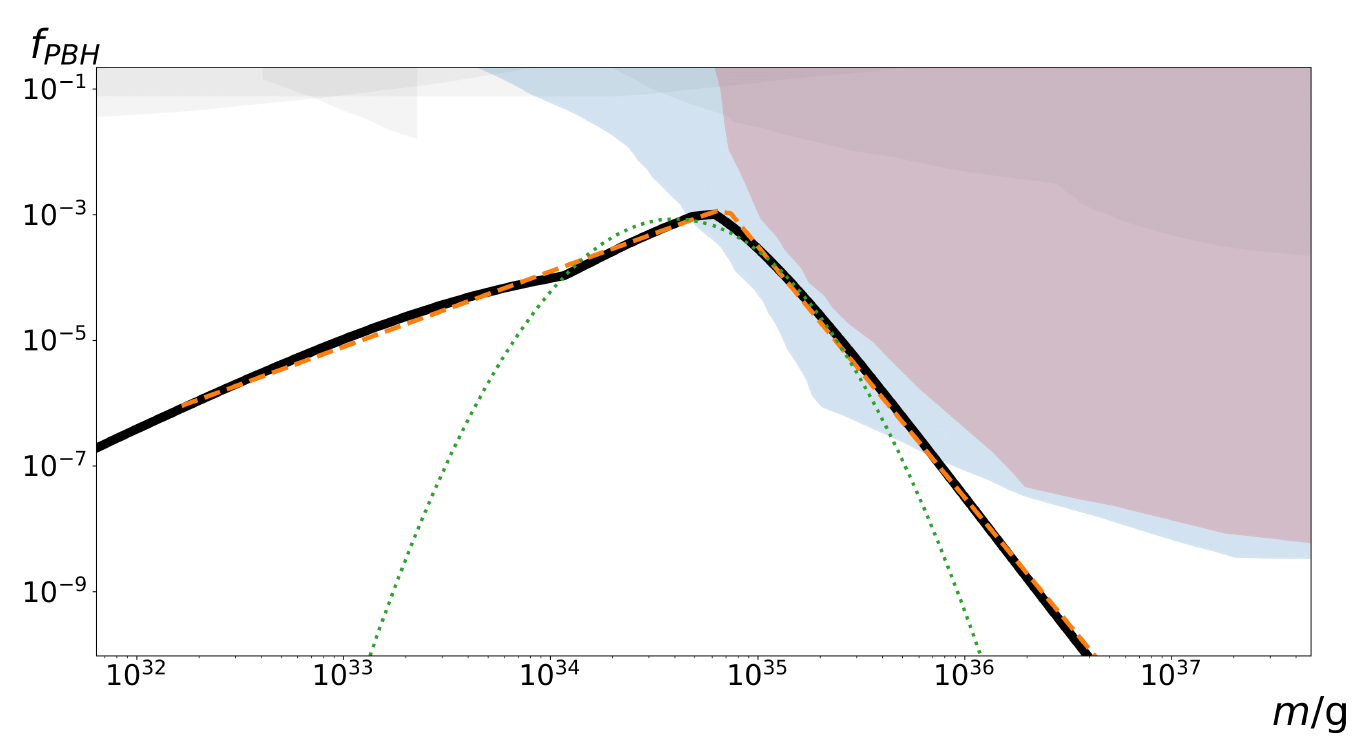
orange: broken power law
green: log-normal
black: our PBH model

Conclusions

PBH mass function
Merger rate
Detection probability
Expected number of observable events
Probability of each detected event
+
+
Likelihood of all LIGO events
Intrinsic PBH merger rate
(Number of event \((m_1,m_2,z)\) per unit volume per unit time)
Signals reaching earth
(Number of event \((m_1,m_2,z)\) reaching the earth per unit time)
Detection probability \(p_{det}(m_1,m_2,z)\)
Size distribution of bubbles after inflation
Constant bubble nucleation rate \(\lambda\) during inflation
Evolution of bubbles in radiation background \(r\)(\(\gamma_i\), \(\rho_i\), \(\rho_b\), \(\sigma\))
BH mass distribution \(f(m)\)
Parameters: \(\lambda\), \(\gamma_i\), \(\rho_i\), \(\rho_b\), \(\sigma\)
"initial speed"
"force"
"mass"
PBH mass function \( f(m)\)
Merger rate \(R(m_1,m_2,z) \propto f(m_1) f(m_2)\)
Detection probability \(p_{det}(m_1,m_2,z)\)
Probability of each event \(p_i(m_1,m_2,z)\)
+
Likelihood of all LIGO events
+
Expected number of detection \(N_e\)
Mergers reaching earth today
\(N(m_1,m_2,z) \propto R(m_1,m_2,z)\)